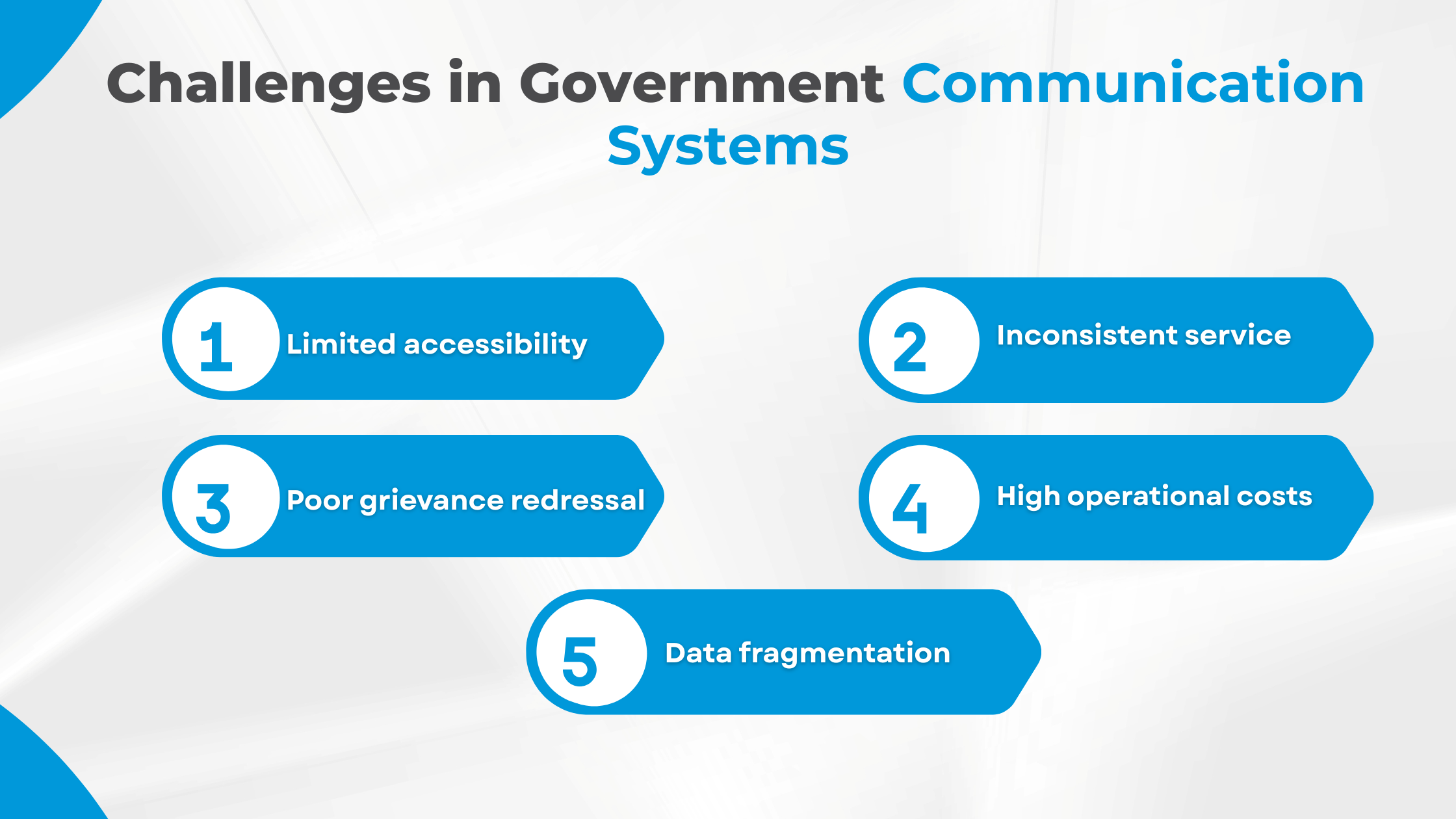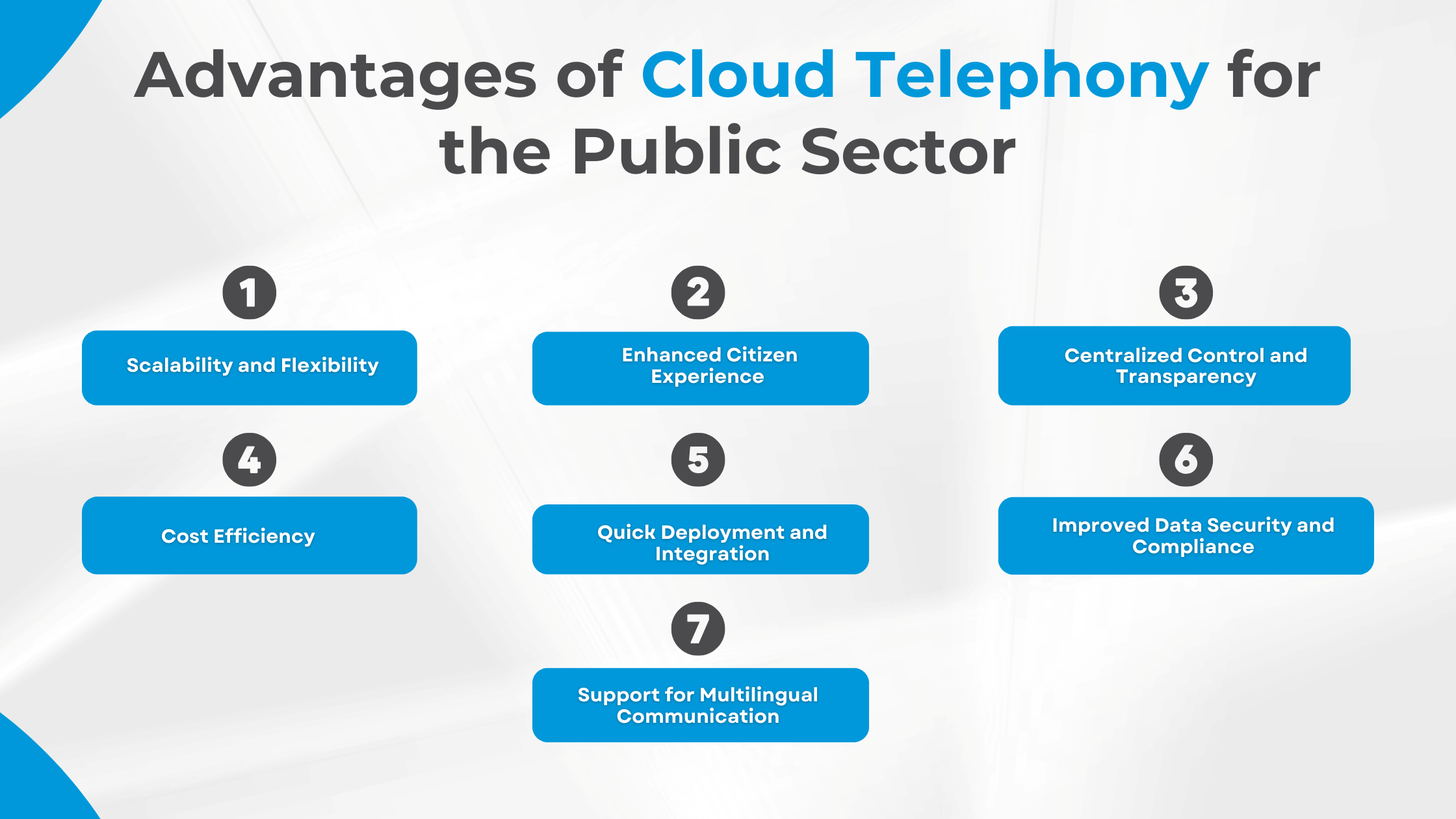Cloud Telephony for Government and Public Sector Services in India
In today’s fast-paced digital environment, cloud telephony in India has emerged as a game-changer for communication across industries. While businesses have adopted it rapidly for customer service, sales, and operations, the government and public sector are now realizing its enormous potential. Cloud telephony, a system that routes calls through the internet rather than traditional phone lines, is helping government departments enhance citizen engagement, streamline internal operations, and deliver public services efficiently.
The increasing push towards Digital India, e-governance, and citizen-centric service delivery has accelerated the adoption of cloud-based communication platforms. As a result, many central, state, and local bodies are turning to cloud telephony solutions in India to overcome challenges such as communication gaps, manual call management, lack of transparency, and delayed responses to public grievances.
Let’s explore how Kommuno’s cloud telephony is transforming the public sector ecosystem and why it’s becoming indispensable for modern governance.
1. Understanding Cloud Telephony and Its Relevance in Governance
Cloud telephony refers to a communication system hosted on the cloud that enables organizations to handle calls, messages, and IVR (Interactive Voice Response) services without investing in heavy infrastructure. It replaces traditional PBX systems and eliminates the need for on-premises hardware.
In the context of government and public administration, cloud telephony acts as a unified communication backbone that connects departments, offices, and citizens through automated, scalable, and secure voice channels. From automated helplines to large-scale grievance management, the system ensures faster and more efficient interaction with the public.
By integrating cloud telephony solutions in India, public offices can manage high volumes of inbound and outbound calls seamlessly. This is particularly relevant for departments like health, education, municipal governance, and emergency response systems, where citizen communication is critical.
2. Challenges in Government Communication Systems

Before the arrival of modern telephony systems, government agencies relied heavily on manual call management and paper-based communication. The challenges were numerous:
- Limited accessibility: Citizens often found it difficult to reach the right department or official.
- Inconsistent service: Different state offices operated in silos, leading to delays and miscommunication.
- Poor grievance redressal: Manual systems lacked tracking and accountability.
- High operational costs: Maintaining multiple phone lines and hardware systems was expensive.
- Data fragmentation: Lack of centralized records made it hard to analyze communication patterns or improve response systems.
These challenges highlighted the urgent need for an integrated communication framework, one that not only simplifies public engagement but also ensures transparency, efficiency, and accountability. That’s where cloud telephony in India steps in.
3. How Cloud Telephony Solves These Challenges
Kommuno’s cloud telephony introduces automation, flexibility, and scalability, all of which are crucial for large-scale public operations. Here’s how it addresses the communication challenges faced by government and public sector bodies:
- Unified Contact Systems: A single virtual number can connect multiple departments, routing calls intelligently to the right person or office.
- Automated IVR Menus: Citizens can navigate through prerecorded menus to reach their desired service, reducing manual intervention.
- Call Recording and Tracking: Every call is recorded and tracked, ensuring transparency and accountability.
- Real-Time Analytics: Departments can access live dashboards showing call volumes, response times, and citizen satisfaction metrics.
- Remote Access: Cloud-based systems allow government staff to handle calls even from remote locations or during emergencies.
- Cost Optimization: Since it’s hosted on the cloud, there’s no need for expensive hardware or maintenance costs.
By deploying the best cloud telephony providers in India, government agencies can create a consistent, reliable, and accessible communication system that strengthens citizen trust and boosts operational efficiency.
4. Key Government Use Cases of Cloud Telephony
The applications of cloud telephony in the public sector are extensive. Here are some major ways in which it is being implemented across departments:
a) Citizen Helplines and Grievance Redressal
Many public departments handle thousands of calls daily, from complaints about municipal issues to queries about welfare schemes. Cloud telephony enables centralized helpline numbers with automated routing, ensuring every call reaches the right department without long wait times.
b) Emergency and Disaster Response
During crises such as floods, health emergencies, or public safety threats, cloud telephony ensures continuity in communication. Calls can be rerouted instantly to available agents, while IVR systems can broadcast emergency alerts in multiple languages.
c) Election Campaigns and Public Awareness
Government election commissions and state authorities use cloud-based outbound calling systems to inform citizens about voting dates, ID verification, or policy awareness. Bulk voice messaging allows information to reach millions quickly.
d) Healthcare and Vaccination Drives
Cloud telephony plays a vital role in health departments for appointment reminders, vaccination campaigns, or telemedicine support. Citizens can call toll-free numbers for health updates or doctor consultations.
e) Education and Skill Development
Education boards use cloud telephony to connect with students and parents, especially for distance learning and exam updates. Automated attendance alerts and feedback collection are easily managed via IVR.
f) Public Utilities and Smart City Projects
For water, electricity, and sanitation services, cloud telephony enables 24×7 complaint registration and status updates. It integrates seamlessly with CRM systems, ensuring citizen feedback loops are complete and data is centralized.
5. Advantages of Cloud Telephony for the Public Sector

The benefits of Kommuno’s cloud telephony in India for the government are multi-dimensional. It doesn’t just improve communication; it builds a foundation for transparency, responsiveness, and trust.
a) Scalability and Flexibility
Unlike traditional systems, cloud telephony allows scalability as per requirement. Whether it’s a small local office or a state-level department, the system can handle varying call volumes without additional infrastructure.
b) Enhanced Citizen Experience
With automated IVR, call queuing, and real-time updates, citizens enjoy a smooth experience. Quick response times and easy access to services enhance satisfaction and faith in public systems.
c) Centralized Control and Transparency
All communication data, including call recordings, agent performance, and feedback, is stored centrally. This helps government bodies audit and improve their service quality continuously.
d) Cost Efficiency
Cloud telephony eliminates the need for physical PBX setups, reducing maintenance and manpower costs. Budgets can then be redirected to improving core citizen services.
e) Quick Deployment and Integration
Solutions from the best cloud telephony providers in India are easy to deploy and integrate with existing CRM, ERP, or citizen portal systems. This ensures minimal disruption and faster rollout.
f) Improved Data Security and Compliance
Modern cloud telephony systems come with advanced encryption and compliance features to protect sensitive government and citizen data.
g) Support for Multilingual Communication
India’s linguistic diversity demands multilingual communication channels. Cloud IVRs can offer instructions and services in regional languages, making governance more inclusive.
6. Real-World Impact: How It’s Changing Citizen Services
Across India, several government departments have started embracing cloud-based calling systems. For instance, toll-free grievance numbers for rural development, women’s welfare, or health departments are now cloud-enabled. Citizens no longer face the frustration of busy lines or unanswered calls.
District-level administrative offices use auto-attendant systems to direct calls based on department type: education, transport, ration card, or pensions. The result is a structured, faster communication chain.
At the policy level, the government’s “Digital India” mission has encouraged departments to move towards cloud-first solutions. Cloud telephony fits perfectly into this strategy by digitizing voice communication and ensuring uniform access across urban and rural regions.
The technology is also helping public-sector enterprises (PSEs) modernize their customer service systems. Banks, telecom firms, and energy providers owned by the government now handle millions of customer interactions through intelligent call routing and data analytics.
7. Choosing the Right Cloud Telephony Partner
To ensure smooth implementation, government departments must partner with the best cloud telephony providers in India who have experience working with large-scale and secure systems. Some key criteria for choosing the right partner include:
- Proven experience in public sector projects
- High uptime and reliability (minimum 99.9%)
- Data localization and security compliance with Indian IT regulations
- Scalability options for handling sudden spikes in call traffic
- Integration capabilities with CRMs and government portals
- Multilingual IVR support for better reach and inclusivity
The best providers offer dedicated dashboards, 24×7 support, and real-time analytics that help officials monitor service performance. Moreover, they ensure redundancy and backup systems to maintain communication even during outages or natural disasters.
8. The Future of Cloud Telephony in Indian Governance
As India continues its journey towards a fully digital government ecosystem, cloud telephony will play a pivotal role. The integration of AI, voice bots, and natural language processing will soon make communication more intuitive. Citizens will be able to interact with government systems through voice recognition and automated assistants, receiving personalized responses instantly.
The fusion of cloud telephony solutions in India with data analytics and AI can help predict citizen needs and improve policy planning. For instance, analyzing call patterns can help identify common complaints or service gaps, enabling proactive action.
Furthermore, 5G connectivity will enhance the performance of cloud-based voice systems, making communication faster and more stable even in remote areas. This will bridge the urban-rural digital divide and bring essential services closer to every citizen.
In the long run, cloud telephony will not just be a tool for communication; it will be an integral part of digital governance infrastructure. Its ability to unify, monitor, and analyze citizen interaction will redefine how governments deliver services and measure impact.
9. Integrating Cloud Telephony with Digital Governance Initiatives
To maximize the benefits of Kommuno’s cloud telephony, integration with other digital initiatives is crucial. Here’s how it complements ongoing government programs:
- Digital India: Strengthens citizen-centric communication across all e-governance platforms.
- Smart Cities Mission: Facilitates real-time service requests and emergency response systems.
- Ayushman Bharat and Health Missions: Enables healthcare helplines, appointment bookings, and follow-up calls.
- Rural Development Schemes: Helps citizens track welfare applications through voice-based updates.
- Public Feedback Systems: Simplifies feedback collection and analytics through IVR surveys.
By connecting telephony systems with digital dashboards, government officers can monitor performance metrics such as response rates, call resolution times, and citizen satisfaction scores. This data-driven approach ensures continuous improvement and transparency.
10. Building Citizen Trust through Voice Communication
Despite the rapid digitalization of services, voice remains the most trusted medium for citizen interaction in India. Many rural and elderly citizens are not comfortable with apps or web portals but feel confident talking to a human or navigating a voice menu.
Cloud telephony in India bridges this trust gap by providing accessible, human-centered communication. Citizens feel heard when their issues are addressed promptly and transparently. In return, governments can establish stronger relationships and improve overall service credibility.
This emotional connection built through clear, responsive, and empathetic communication is what truly transforms governance in the digital age.
Conclusion
Cloud telephony is more than a communication upgrade; it’s a cornerstone of efficient, transparent, and citizen-friendly governance. With the growing emphasis on digital transformation, cloud telephony solutions in India are enabling governments to serve citizens better, faster, and more reliably.
From emergency helplines to rural grievance systems, the technology simplifies every interaction between the state and its people. It reduces operational bottlenecks, enhances accountability, and ensures that every voice, from the biggest city to the smallest village, is heard.
As more departments adopt this innovation, the partnership between public service and technology will grow stronger. And with Kommuno leading the way, the future of citizen communication looks promising: efficient, inclusive, and truly digital.
